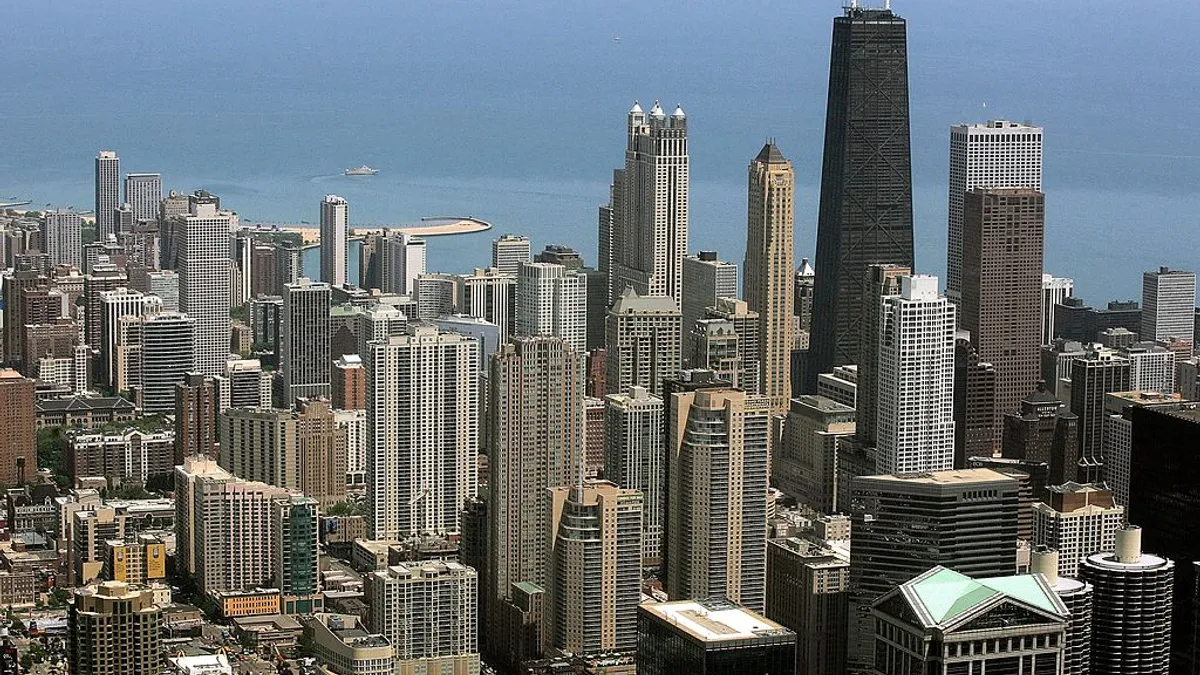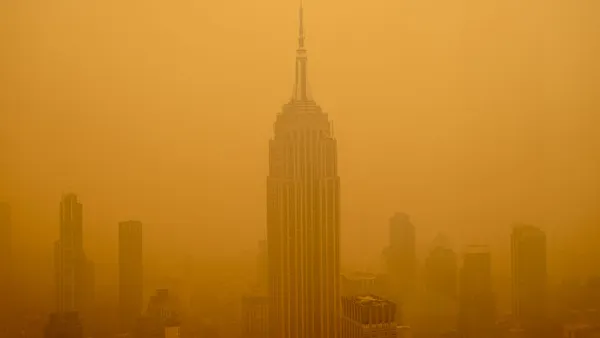Dive Brief:
- The city of Chicago last week announced a five-year agreement with Constellation Energy to purchase 100% renewable energy for all city-owned facilities and operations by 2025.
- In 2025, Chicago will begin partially sourcing energy from a new, 593 MW solar installation that Constellation partner Swift Current Energy will develop in central Illinois. Initially, it will partially power high energy consumption facilities, such as airports, the central library and a water purification plant.
- The city also will purchase renewable energy credits from other sources for some power consumption, such as at small and medium-sized buildings and for streetlights.
Dive Insight:
This move will help Chicago reduce its carbon footprint, in alignment with its most recent climate action plan. The plan aims for a 62% carbon emissions reduction by 2040, including through increasing access to and use of renewable energy. Three years ago, the city pledged to transition to 100% renewable energy by 2035. The new commitment is a “great step” that “puts Chicago on the leading edge,” said Robert Kelter, senior attorney at the Environmental Law & Policy Center.
“Most importantly ... they're building a large new project, rather than the city just buying RECs from older sources,” Kelter said. “They’re actually putting additional clean energy onto the system.”
Construction on the new solar project is expected to begin this year and last 12-18 months. As part of the deal, Constellation and Swift Current Energy also committed to fund job training and education that develop a diverse clean energy workforce.
The solar installation will be among the largest in Illinois so far. As of Q1, Illinois housed 1,465 MW of solar, and the Solar Energy Industries Association projects that will grow 1,700% over the next five years. Illinois's Renewable Portfolio Standard establishes that 25% of the state’s energy should come from renewable sources by 2025.
Much of the energy Chicago consumes is from carbon-free nuclear generation. Illinois has more nuclear power generation capacity than any other state. Exelon owns and operates all six of the nuclear power plants, which in 2020 accounted for 58% of in-state electricity generation.
Nuclear power was included in Illinois’ definition of “clean energy” – at least 90% free of carbon dioxide emissions – in the Climate and Equitable Jobs Act passed last year, which aims to transition the state to 50% clean energy by 2040 and 100% clean energy by 2050. Even with the new advancement toward renewables, the city and state are unlikely to completely leave nuclear any time soon.
“I don't think right now Illinois is in a position to move away from nuclear,” Kelter said. “In order to meet our climate goals, we’ve first got to eliminate coal and natural gas, which cause global warming in a way that nuclear doesn't.”
Other Illinois cities already have decided to use power from the new solar installation once it is finished, and more could follow. Neighboring communities taking similar action increases the economy of scale.
“When the city of Chicago makes a purchase like this and a commitment to clean energy, it helps build the market and it does encourage smaller cities and municipalities to make similar commitments,” Kelter said.
Cities of all sizes across the U.S. are making strides toward their transition to renewables. In 2014, Burlington, Vermont, became the first U.S. city to achieve 100% renewable energy. Las Vegas marked the achievement in 2016. Last week, Consumers Energy entered a 20-year agreement with the state of Michigan to power nearly 1,300 government buildings solely with renewable energy. In Seattle, 100% of power generated by utility Seattle City Light comes from renewable resources, 86% of which is hydropower.
According to data from the American Council for an Energy-Efficient Economy, nine of the 100 largest U.S. cities currently use renewable or zero-emissions energy to power 100% of their municipal buildings. Chicago will become the sixth city committed to powering 100% of its municipal buildings with renewables or zero-emissions power by 2025. An additional 32 cities have goals for using renewables to some extent.













